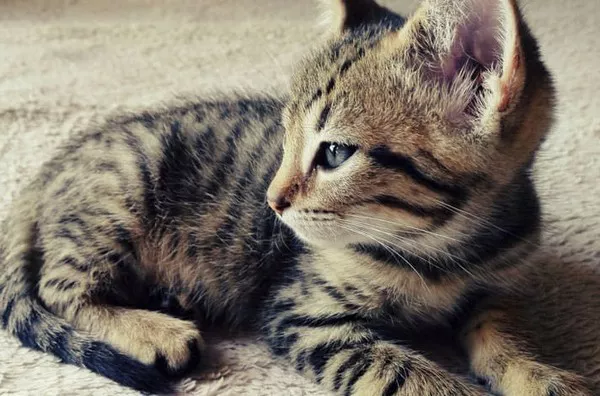Angelfish, known for their striking appearance and graceful movements, have become popular choices for aquarium enthusiasts around the world. These beautiful freshwater fish belong to the cichlid family and are native to the Amazon River Basin. While their aesthetic appeal is undeniable, many aquarists wonder about the behavioral traits of angelfish, particularly the question: are angelfish protective? In this comprehensive guide, we will delve into various aspects of angelfish care, behavior, and their interactions with other tank mates.
1. The Fascinating World of Angelfish
Before delving into their protective nature, let’s explore the fascinating world of angelfish. With their distinctive triangular bodies and long, flowing fins, angelfish add a touch of elegance to any aquarium. These freshwater beauties are available in various color variations, from classic silver to vibrant shades of orange, black, and even marble patterns.
2. Will Angelfish Protect Themselves?
One of the common concerns among aquarium enthusiasts is whether angelfish have protective instincts. The answer is yes – angelfish are protective of themselves and their territory. In the wild, angelfish are known to be territorial, especially during the breeding season. They establish and defend territories to ensure the safety of their eggs and fry.
3. Are Angelfish Friendly?
While angelfish can be protective, they are not necessarily unfriendly. In a well-maintained aquarium, angelfish often coexist peacefully with other compatible species. Establishing a harmonious community tank requires careful consideration of tank size, water parameters, and the compatibility of tank mates. Angelfish can be sociable, particularly when kept in groups, and they may form hierarchies within the school.
4. The Importance of Tank Size for Angelfish
To encourage positive interactions among angelfish and other tank mates, it’s crucial to provide an adequately sized tank. Angelfish need space to establish territories and maintain a hierarchy without causing stress or aggression. A minimum tank size of 20 gallons is recommended for a pair of angelfish, with additional space required for larger groups.
5. Do Angelfish Clean Other Fish?
Angelfish are not known for being cleaner fish like certain species of catfish. They do not engage in the behavior of removing parasites or dead skin cells from other fish. However, their presence can contribute to the overall cleanliness of the tank environment. Regular water changes, proper filtration, and a balanced diet are essential for maintaining optimal water quality in an angelfish aquarium.
6. The Role of Angelfish in Controlling Pest Snail Populations
While angelfish may not clean other fish, they do have an interesting behavior that benefits the aquarium ecosystem. Angelfish are known to feed on small snails, providing a natural method for controlling pest snail populations. This can be an added bonus for aquarists dealing with unwanted snails in their tanks.
7. Are Angelfish Aggressive?
The question of whether angelfish are aggressive is a common one. The answer depends on various factors, including the individual temperament of the fish, the size of the tank, and the presence of suitable hiding spots. In general, angelfish can display aggression, especially during the breeding season or when defending territories. Providing ample hiding places and maintaining proper tank conditions can help mitigate aggressive behaviors.
8. Breeding Angelfish: Protective Parental Instincts
When it comes to breeding, angelfish exhibit fascinating behaviors. During the spawning process, angelfish become highly protective of their eggs and fry. They carefully guard the eggs against potential threats, including other fish in the tank. Aquarists should be cautious when introducing new tank mates during the breeding period to avoid stress and potential conflicts.
9. The Impact of Water Parameters on Angelfish Behavior
To ensure the well-being of angelfish and minimize aggression, maintaining appropriate water parameters is essential. Angelfish prefer slightly acidic to neutral water with a pH range of 6.5 to 7.0. Additionally, stable water temperature between 75°F to 82°F is crucial for their overall health and behavior. Fluctuations in water conditions can stress angelfish and contribute to aggressive tendencies.
10. Tips for Creating a Harmonious Angelfish Community
In conclusion, angelfish can be a wonderful addition to a community aquarium when proper care and considerations are taken into account. To create a harmonious angelfish community, provide an adequately sized tank, maintain stable water conditions, and consider the compatibility of tank mates.
Whether they are protecting their territory, exhibiting fascinating breeding behaviors, or contributing to pest snail control, angelfish are captivating creatures that can thrive in a well-maintained aquarium environment.
By understanding the protective instincts of angelfish and catering to their specific needs, aquarists can enjoy the beauty and grace of these fish while promoting a healthy and balanced aquarium ecosystem.
Related Topics:
How Big is a 6 Month Old Angelfish: A Quick Guide
Freshwater Angelfish: Aquarium Feeding Guide (2023)
Do Angelfish Eat Garlic? | Aquarium Feeding Forum


























